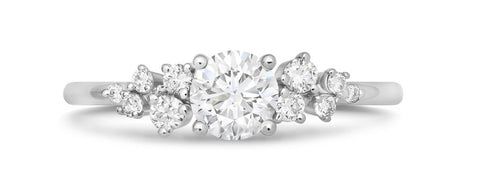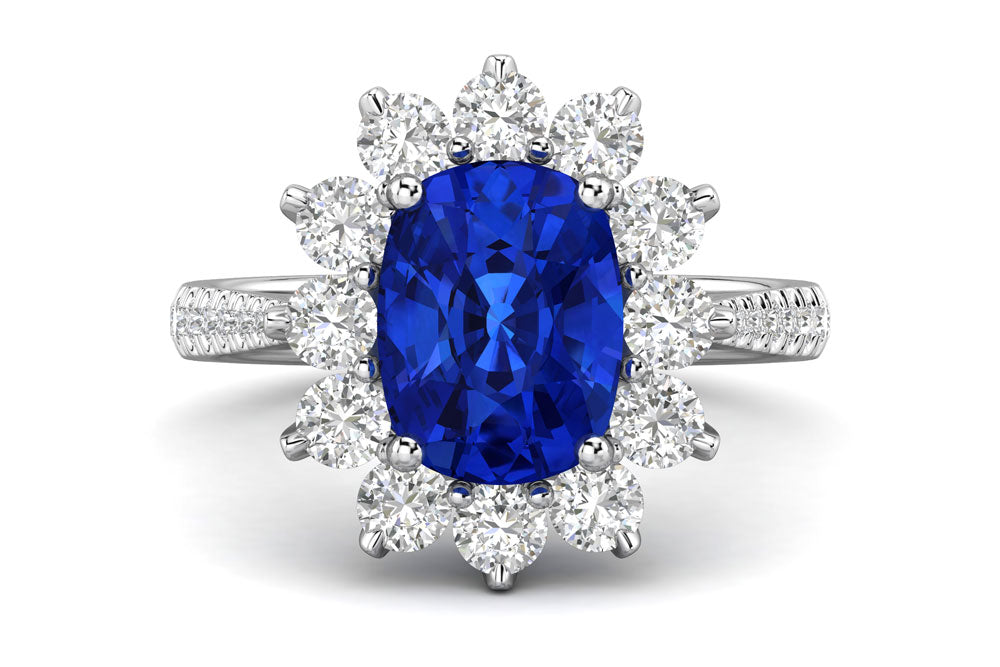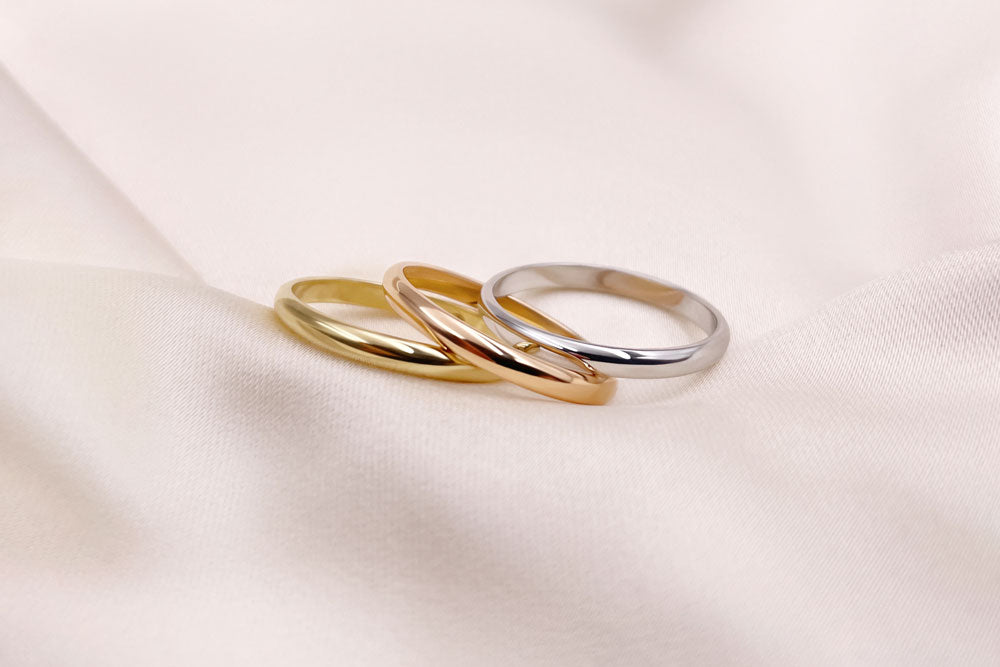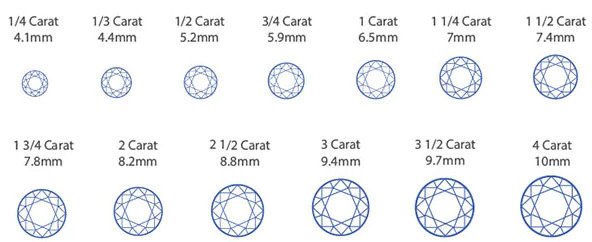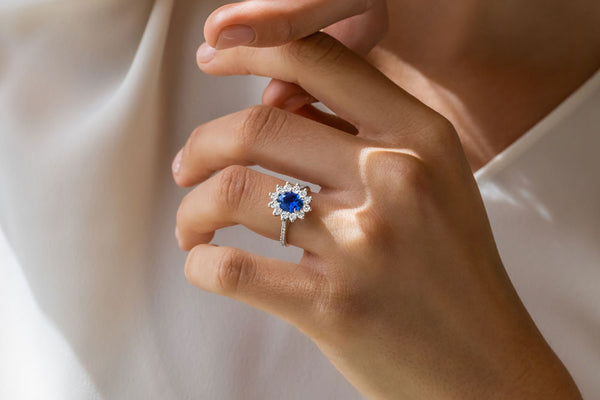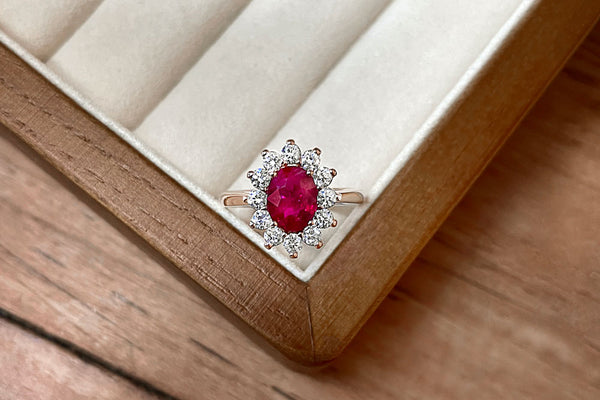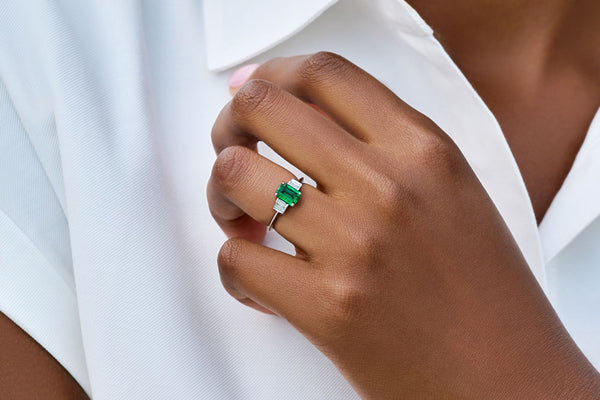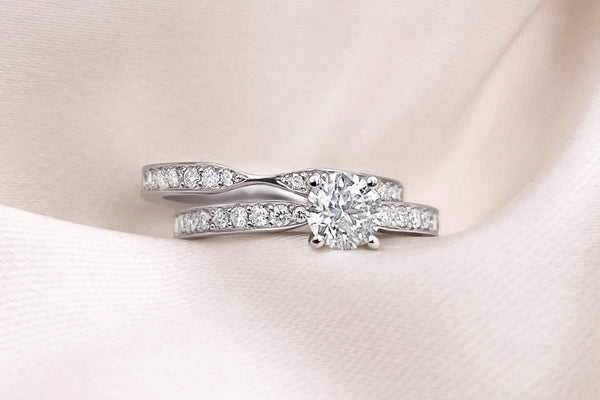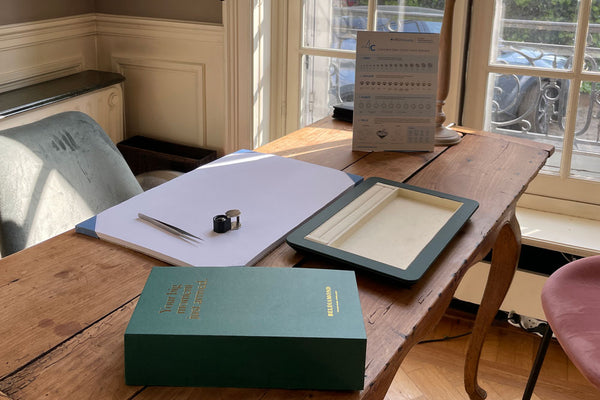The Complete Guide to Choosing an Engagement Ring
An engagement ring holds a profound significance for individuals, representing commitment, love, and a sincere intent to embark on the journey of marriage.
The first engagement ring traditions can be traced back to ancient Egyptians, who used them to symbolise betrothal.
Over time, engagement rings have evolved, but they continue to retain their popularity and symbolic nature, signifying the enduring commitment and love shared between partners.
In this post, we’ll provide you with all the necessary information about engagement rings to help you choose the best ring for your partner.
Choosing the overall design
When choosing the overall design, there are multiple styles that may suit your partner’s preferences or the type of jewellery they like.
Here are various designs to choose from:
Solitaire
A solitaire engagement ring epitomises timeless elegance. It is a popular and simple design with only one centre diamond and a plain band. There are no extra diamonds or gemstones adorning any other part of the ring design. The discreetly designed bands and settings aim to make the gemstone the centre of attention.
Typically, traditional solitaire engagement rings feature a diamond in a 4-prong setting, though equally captivating variations include other gemstones and the option of a 6-prong setting.
Pavé
Well known for their stylish allure and an added touch of glamour, pavé engagement rings are similar to classic solitaire rings with their centre gemstone. The central gemstone is complemented by small diamonds encasing either the entire band (full pavé) or half of the band (half pavé).
This setting enhances the allure and brilliance of the central gemstone as the centre diamond captures and reflects light.
Halo
Halo engagement rings feature a central stone enveloped by smaller gemstones encircling it. This design enhances the visual impact of the central stone, making it appear larger.
You also have the option of a double or triple halo, which further elevates the ring's aesthetics. Halos are commonly used with pavé bands for a combined touch of elegance.
Side-stones
Side-stone engagement rings have a central stone complemented by gemstones on each side. This arrangement not only enhances the ring's design but also adds structural sophistication, amplifying the brilliance of the central stone.
An exemplary representation of this style is the trilogy ring, where three stones symbolise the past, present, and future of a relationship. This elevates both the aesthetic and sentimental value of the ring.
Vintage
Echoing the allure of antique jewellery styles, vintage rings encapsulate the beauty and passion of past eras, such as the historical charm of the Victorian, Edwardian, Art Deco, and various other periods.
They are mainly adorned with detailed finishing that combines the finest designs from jewellers from these past eras with a modern and trendy aesthetic, creating a stylish design that transcends time.
Creative
Creative engagement rings are uniquely crafted and personalised designs. They feature a harmonious blend of diverse gem settings and captivating designs that can be tailored to match your preferences or to reflect your partner's personality and style.
Beldiamond offers a wide range of engagement ring designs, take a look at our collection to get inspired.
Considerations for design choices
Looking at your partner’s jewellery collection or asking their friends or family members can help you surprise them with an ideal ring. If the engagement is not a surprise, you can simply ask them what they may like.
LIFESTYLE CONSIDERATIONS
Your partner’s lifestyle, including hobbies and jobs, can help you choose the perfect engagement ring. For example, some occupations can make wearing a particular type of ring a hassle compared to others.
One’s hobbies may determine whether you need a durable or less durable ring. Your partner may sometimes forget when and when not to wear their engagement ring.
Either way, it’s a good idea to follow the basic guidelines for taking care of your jewellery.
Setting a budget
An engagement ring is composed of several factors influencing its price:
- The central gemstone (around 60% of the budget)
- The ring design (around 20 % of the budget)
- The metal (around 10% of the budget)
- The craftsmanship (around 10% of the budget)
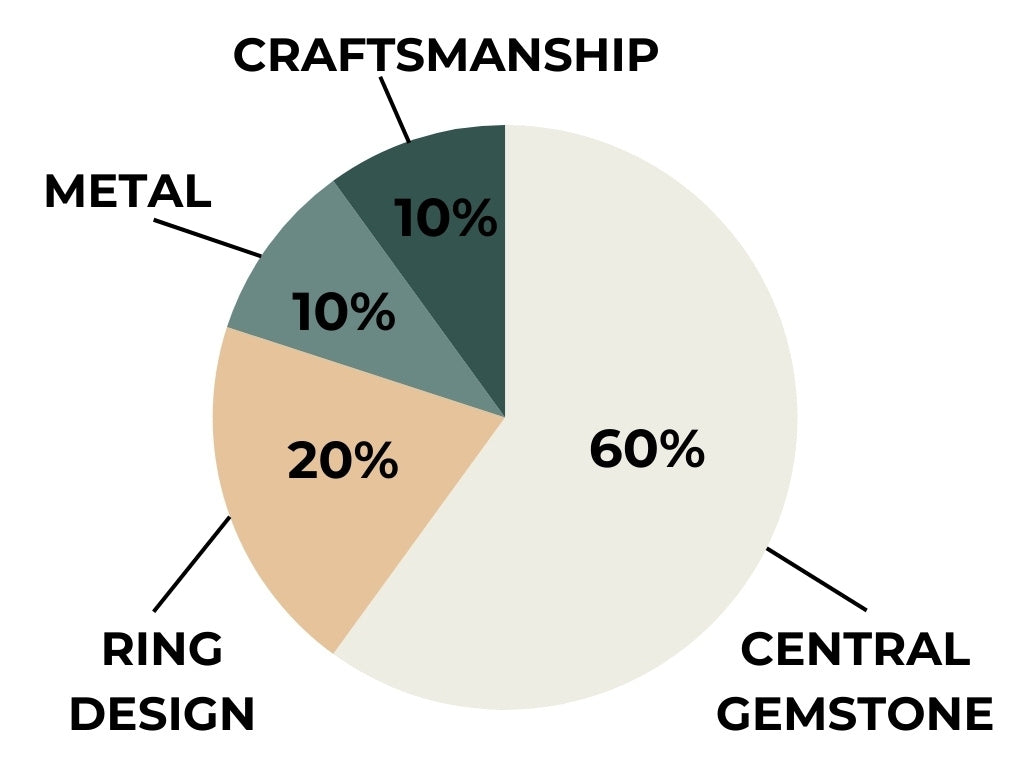
The central stone of an engagement ring is the primary determiner of a ring’s budget.
The carat, shape, and quality of the gemstone significantly affect the overall engagement ring cost.
Here is a list of the two other most important aspects that can help you determine your engagement ring budget:
Engagement ring design
Engagement rings with intricate designs, such as those with side stones or detailed bands, are more expensive. It takes time to design and achieve the minor details perfectly.
Take a look at our engagement ring collection to find your perfect match.
Choosing the metal of the band
The most popular engagement ring metal bands are gold and platinum. You can settle for a specific metal or choose a design that combines various metals.
GOLD
Gold is a classic and reputable choice available in wide varieties and colours, including white, yellow, and rose gold.
Gold and its alloys are measured by their purity and denoted as karat (k). The purest gold is 24k, which has no alloys and is too soft to be used in jewellery. The two most commonly used purity in jewellery making is 18k, followed by 14k.
The grading can also be based in part per thousand (PPM), where 24k is 1000, and 18k is 750/1000, meaning it is 75% gold and 25% of other metals.
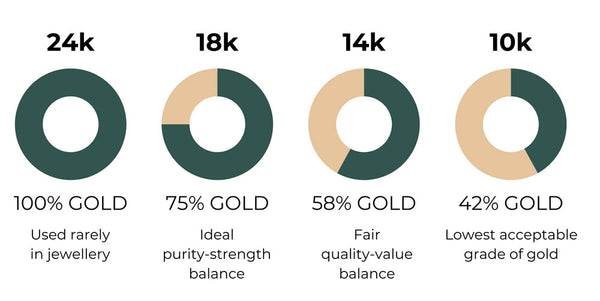
At Beldiamond, we recommend and exclusively sell 18k gold.
PLATINUM
Platinum can be mistaken for white gold, but it is denser than gold and feels heavier on the finger. A platinum band contains 95% pure platinum, making it more expensive than a mix of alloys and metals but also more resistant.
Platinum is one of the rarest metals that offers a wide range of benefits as a ring band, including:
- Requires little to no maintenance
- Has a silver colour and shine that displays a high-end appearance
- It’s hypoallergenic
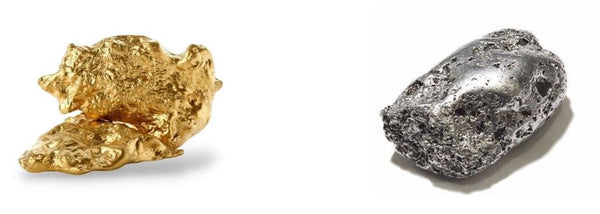
| GOLD | PLATINUM |
| Natural colour: Yellow | Natural colour: White |
| Moh's scale of hardness: 2.5-3 | Moh's scale of hardness: 4-4.5 |
| Less durable and less expensive | More durable and more expensive |
| May cause allergic reactions when the purity level is too low | Hypoallergenic |
To learn more about the differences between the two metals, read: Differences between gold and platinum.
Choosing the central stone
The central stone is the focal point of your engagement ring and is the first feature that catches people’s attention. Therefore, thoughtful consideration should go into choosing the cut, colour, and clarity to ensure you get a ring that suits your preferred sense of style.
Let us look at the 4 main gemstones to help you decide which would be ideal.
Diamond
The history of diamond use as engagement rings dates back to 1477 when Archduke Maximilian of Austria gifted his wife, Mary of Burgundy, a diamond engagement ring.
Diamonds have an unmistakable dazzling sparkle, making them a popular choice for most engagement ring central stones. They are also the most durable choice, ranking 10 in hardness on the Moh’s scale.
If you plan to choose a diamond engagement ring, here are some important things you need to know about these precious stones:
THE 4C'S: CARAT, CUT, CLARITY, COLOUR
The 4Cs represent diamond’s widely accepted standard characteristics that describe their quality and value. They dictate how high a diamond’s quality is and their value.
The 4Cs are graded by independent laboratories. Here’s a quick overview of each C’s:
-
Carat refers to the weight of a diamond but is commonly mistaken for its size. Two diamonds sharing the same carat weight can vary significantly in size. For example, the weight of a 1-carat diamond consistently equals 0.2 grams, irrespective of its size or shape.
-
Cut refers to the symmetry of a diamond’s facets and the measurements of its angles. It is the only factor influenced by the human hand. Beware not to confuse it with the diamond’s shape. A diamond's cut is the most critical factor in how brilliant and sparkly it looks.
-
Clarity refers to how visible its imperfections are. Diamonds are not perfect. They may have inclusions and blemishes, but what matters is how noticeable they are. A diamond for an engagement ring should be clear of visible inclusions unless viewed under magnification.
-
Diamond colour ranges begin from D to Z. D represents colourless, while Z represents a light yellow or brown colour. It’s important to choose the right colour scale for an engagement ring.
To learn more about the 4Cs and 3 other important factors when choosing a diamond, read the 7 Factors to Consider When Buying a Diamond.
CERTIFICATION FOR STONES OVER 0.30 CT
When buying a diamond over 0.30 carats, it's essential to request a diamond certification from a reputable gemology laboratory. This certification includes a detailed report of its characteristics. It serves as an assurance of the stone's stated quality.
0.30 ct diamonds get certified as they are of decent value, and most buyers consider certification when buying such a stone. 
Find out more about why it is recommended to buy a certified diamond.
NATURAL VS LAB GROWN DIAMONDS
Natural and lab grown diamonds have the same physical and chemical properties. They are similar in many ways, apart from how they are made.
Despite their similarities, each has its advantages and disadvantages: Let’s explore them in detail.
Natural diamonds
Mined diamonds are rare since they were formed millions of years ago in the earth’s crust. Their natural creation gives them a symbolic value that allows them to retain or increase their value over time.
On the downside, natural diamonds are quite costly due to their limited supply.
Lab grown diamonds
Lab grown diamonds are manufactured through a less invasive method and a shorter period, making them affordable for most couples. Like natural diamonds, they can also be graded and certified.
The main disadvantage of lab grown diamonds is that they retain much less value over time due to mass production resulting from their creation method. 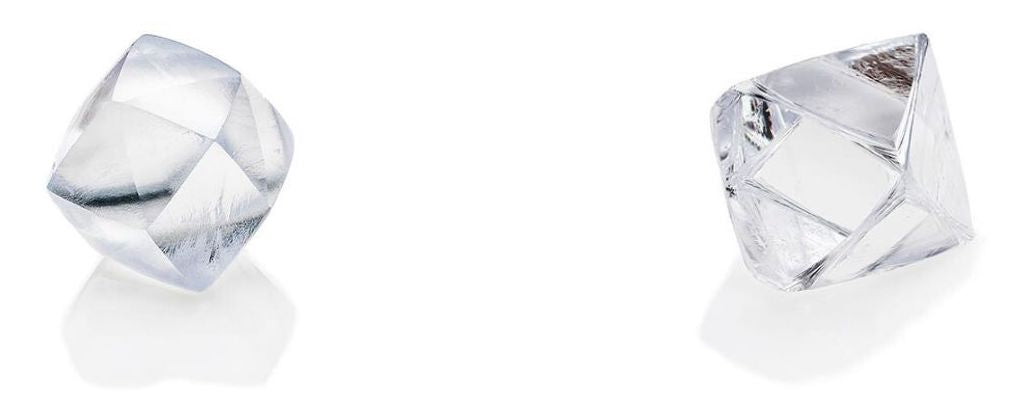
| LAB GROWN | NATURAL |
| Chemical composition: carbon | Chemical composition: carbon |
| Moh's scale of hardness: 10 | Moh's scale of hardness: 10 |
| Created in a laboratory | Created in the earth's mantle |
| More affordable but loses value over time | More expensive and retains its value over time |
For more information about the differences between the two, read: Lab grown Diamonds vs. Natural Ones: Which One Should You Choose?
Sapphire
Sapphires are the second most sought-after option for engagement rings. They are beautiful, rare, durable stones symbolising sincerity, faithfulness, and honesty.
Sapphires rank 9 in hardness on the Moh’s scale, making them one of the hardest stones. They are less expensive than diamonds, making them a good alternative for your partner’s engagement ring.
The most popular sapphire colour is blue, but they are also available in any colour imaginable apart from red.
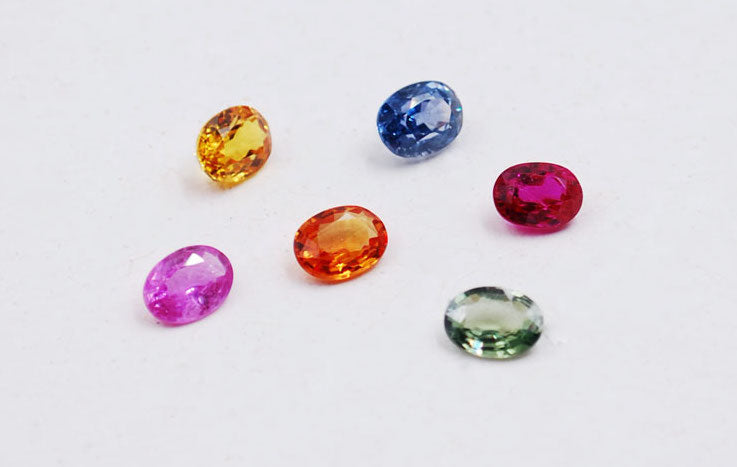
The Diana Ring is a popular vintage-inspired sapphire engagement ring with a royal connection. Prince Charles got the inspiration for the ring from the sapphire brooch worn by Queen Victoria before offering it to Princess Diana.
If you would like to know more about sapphires, read how to choose a quality sapphire.
Ruby
Like sapphire, ruby gemstones rank 9 on Moh’s hardness scale, making them durable. Their distinctive red colour symbolises passion, wealth, and protection.
Ruby stones are available in multiple red colour variants, with the finest ones being pure red.
Some rubies, especially those with an antique or classical value, can command high prices. Most are significantly less expensive than diamonds of the same size, making them an affordable option.
They are also a unique and rare choice for engagement rings as they are less popular.
Discover how to select a quality ruby for that distinctive engagement ring that stands out from the crowd.
Emerald
The hardness rating of emerald stones ranges from 7.5 to 8 on the Moh’s scale, making them durable. They are regarded as symbols of rebirth, growth, and love.
Emeralds' striking green colour is so enchanting it captured Queen Cleopatra’s attention. They are available in multiple shades of green.
Emerald stones make great central stones for engagement rings due to their love, honesty, and inner peace symbolism. They are believed to allow the wearer to receive unconditional love.
Explore how to choose a quality emerald to design the perfect engagement ring.
Key considerations when choosing a coloured stone
COLOUR INTENSITY
The colour of a gemstone is determined by its hue, tone, and saturation. Hue represents the main colour seen by the eye, while tone indicates the lightness or darkness of the gemstone.
Saturation, or the stone's colour intensity, is graded on a scale from high to low. Terms like “vivid” denote intense saturation, while grey indicates lower colour intensity.
The most valuable engagement ring gemstones have vivid saturation with average hues and tones.
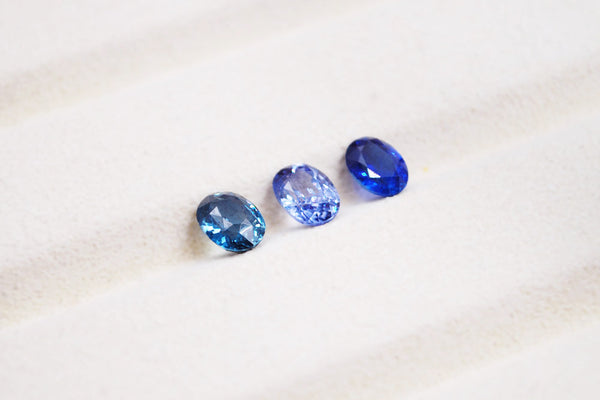
SHAPE & CUT
The shape and cut of your gemstone determine its brilliance and how well its imperfections are concealed. After intensity, it is the most critical factor to consider when going for a coloured stone.
Different gemstone shapes
Central engagement ring stones are the most symbolic feature of the ring. The most popular shape for diamond engagement rings is the round brilliant cut.
Other popular options include:
-
Oval
-
Cushion
-
Pear
-
Emerald
The stone’s shape also affects its price. The round cut is the most brilliant and in-demand shape; hence, it is the most expensive.
Emerald-cut stones are less expensive than round-cut gemstones since they have fewer facets. You can acquire a large emerald diamond engagement ring at a much lower price than a round-cut diamond ring.
For more information, read: The 7 most popular diamond shapes.
Selecting the engagement ring settings
An engagement ring setting impacts its brilliance and the security of the stone(s). Most rings use prong and bezel settings, which provide maximum security, preventing the loss of your gemstones.
The bezel ring setting partially covers the stone, keeping it intact, while the prong setting consists of 4-6 metal prongs extending from the band and over the stone.
If your ring has accent stones, the best setting is a castle or bead. The castle ring setting secures gemstones nearly the same diameter as the band, while the bead comprises small round metal pieces rising from the band’s surface to hold each stone.
Learn more about the different styles of engagement ring settings.
How to determine the ring size
The perfect ring should fit your finger, not be too tight, but still offer some resistance when moving it over your knuckle.
Women wear rings with an average size of 52 to 54 (5,2 cm to 5,4 cm). But if they have small fingers, they can be as small as 49 and as large as 56 for thick fingers.
We’ve combined a few tips on how to find the correct ring size.
Finding a jeweller
A reliable jeweller provides adequate information upfront, such as price, types of rings, and the period it will take to be ready. They also offer warranties and policies to help with returns, repairs, and resizing.
To prepare for your appointment:
- Ask yourself what type of ring you want and how much you are willing to spend
- Request your jeweller to show you various gemstones that are within your budget
- Inquire when and how you’ll get the ring and what is their return and warranty policy
Learn the most important questions to ask a jeweller to ensure you buy from a trusted source.
How far in advance should you buy the ring?
An engagement ring should not be a last-minute thing. Tailor-made rings may take 4 or up to 6 weeks, while ready-made rings requiring minor modifications require around 2 weeks.
If the ring you want is in stock, shipping may take a week or less.
Check our collection of rings ready to deliver in 7 days.
Elevate your love story with the perfect engagement ring
Choosing an engagement ring is a profound expression of love and commitment, Considering factors like lifestyle, budget, and the symbolism behind different stones is essential to finding the perfect ring.
Ultimately, the ring you choose becomes a cherished part of your love story.
Its significance is a tangible reminder of the enduring bond between partners and the commitment to a lifetime of love and companionship.
For more information on the best rings for your engagement, contact Beldiamond to speak with an expert.





